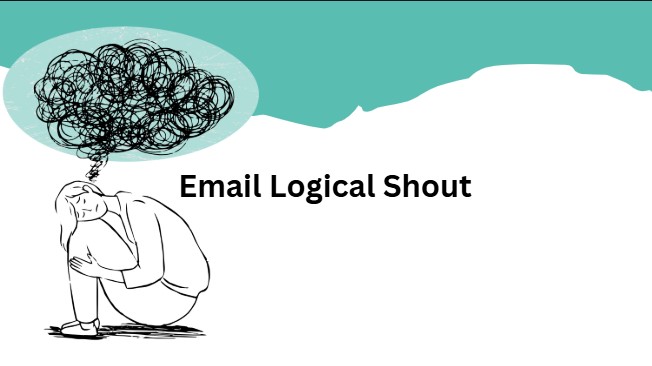Understanding the Concept of Email Logical Shout
In the fast-paced world of digital communication, email logical shout stands out as a structured and impactful way of sharing information. It combines the efficiency of email with the precision of logical structuring, ensuring messages reach the right audience. Unlike casual communication, email logical shout is purpose-driven. It is designed to deliver facts, updates, promotions, or instructions in a way that leaves no room for misinterpretation.
Professionals across industries use email logically as a tool for building relationships, making announcements, and streamlining collaboration. The format thrives on clarity and intent, allowing recipients to process information without confusion.
The Core Principles Behind Email Logical Shout
For email logical shout to be effective, several guiding principles come into play. The first is clarity—every sentence must directly serve the main purpose of the message. The second is structure—information should be arranged in a way that is easy to navigate. Finally, there is relevance—every detail included should matter to the reader.
An effective email logically shouts and avoids filler words and unnecessary jargon. Instead, it uses plain, direct language that addresses the audience’s needs. Each message is crafted with the reader’s perspective in mind, ensuring higher engagement rates and fewer follow-up questions.
These principles do not just apply to formal corporate messages; they are equally important in marketing campaigns, customer updates, and personal outreach efforts. When properly executed, email logishout can create a lasting impact.
Why It Is Essential in Modern Communication
In a time where instant messaging platforms and social media dominate, one might assume email is becoming outdated. However, email logical shout proves the opposite. It offers a level of professionalism and permanence that instant chats often lack. Emails can be archived, searched, and revisited, making them ideal for record-keeping and formal agreements.
Businesses use email logically to announce policy changes, share reports, promote events, and nurture client relationships. Since it carries a formal tone, it is often the preferred channel for official communication. Moreover, the measurable nature of emails—through open rates and click-through metrics—helps organizations refine their strategies.
With email logical shout, senders can control the narrative, ensuring messages remain consistent across all recipients. This consistency is crucial in avoiding misunderstandings and maintaining brand integrity.
Also read: LinkedIn Sales Invigilator
Structuring an Effective Email Logical shout
A well-structured email logically should begin with a clear subject line that instantly conveys the purpose. The opening paragraph should be concise yet compelling, capturing the reader’s attention from the start. Body paragraphs need to be organized logically, with each section addressing a specific point.
Bullet points, numbered lists, and subheadings within the body can enhance readability. While crafting the closing section, the sender should include a call to action or a clear next step. Finally, signatures and contact details should be placed strategically to encourage follow-up.
In email logicalshout, formatting matters. Short sentences, adequate spacing, and strategic emphasis (through bold or italics) make the email easier to scan. Readers appreciate a layout that respects their time.
Common Mistakes to Avoid in Email Logical shout
While email logical shout can be highly effective, certain mistakes can reduce its impact. The first is overloading the message with unnecessary details. Another mistake is using vague or ambiguous language that leaves the recipient unsure of what is expected.
An email logical shout should avoid being overly casual in professional contexts. Similarly, failing to proofread for spelling and grammar errors can harm credibility. Another common error is ignoring the importance of personalization—generic messages often fail to engage readers.
Finally, neglecting to provide a clear action or follow-up step leaves the communication incomplete. Every logical email should have a purpose that guides the recipient toward a specific response.
Best Practices for Maximizing the Impact of Email Logical Shout
The best email logical shout messages are concise, relevant, and visually appealing. One effective practice is to segment the audience so that each message addresses the right group. Another is to send emails at optimal times, increasing the chances of higher open rates.
Using a professional tone without sounding robotic is key. Including the recipient’s name, referencing past interactions, and tailoring content to their interests can make the email logical and more engaging.
Incorporating data or facts to support statements adds credibility. For example, if a business is announcing a new product, including performance metrics or customer testimonials can strengthen the message. A final touch is to ensure the email is mobile-friendly, as many recipients read their email logically on smartphones or tablets.
The Future of Email Logics in a Digital World
As technology evolves, so will email logicalshout. Artificial intelligence, automation, and personalized content generation are already shaping how these emails are created and delivered. In the near future, email logical shout may become even more targeted, with predictive analytics helping to anticipate recipient needs before they arise.
However, one thing will remain constant—the need for clarity, structure, and purpose in communication. No matter how advanced the tools become, the foundation of an effective email logical shout will still be the human ability to connect meaningfully through words.
Organizations and individuals that master logical email today will find themselves ahead in tomorrow’s competitive communication landscape. Its combination of professionalism, adaptability, and measurable results ensures it will remain a cornerstone of modern correspondence.

